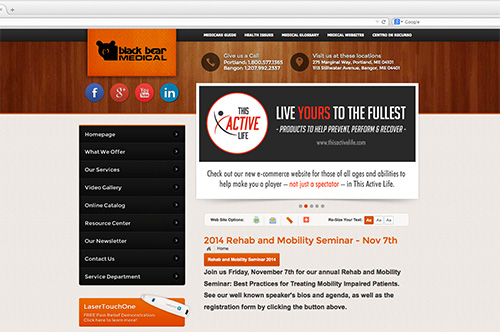Like it or not, the Internet has changed your buyers’ behaviors. According to Marketo, few consumers use the phone. Instead, more than 71 percent start their buying process online. Of the potential buyers who land on your website, 50 percent leave right away. A small percentage (2 percent) are likely to buy in the short term. But the critical number is the other 48 percent. Data shows they will buy at some point in the future. During that waiting period, more than 75 percent of those potential buyers will return to the Internet 3 to 12 times to obtain more information and validate their buying decisions. That leaves you with two options: hope these potential buyers remember your name, return to your website and eventually buy from you; or develop a system to capture their contact information and proactively control the process of providing them with the information they want. This option also allows you to build trust and relationships, increase your customer base and number of qualified leads and strengthen your online brand. Furthermore, you don’t have to worry about the process of buying leads—an unpleasant and risky proposition in the HME industry.

If you like the sound of option two, here are six ways you can put that practice into place on your website.
1. Identify a Pressing Problem
When a visitor lands on your website, it’s because they have a problem and are hoping you have a solution. Do you know the most pressing problem of the prospect? If not, here are a few ways to find out.
- What comments do your customer service and sales departments hear most frequently?
- What topics are popular in industry trade journals?
- What are the trends you’re seeing in online communities?
- Pick up the phone and ask potential customers what is vexing them.
- Leverage social media groups such as those on LinkedIn to get a feel for the problems potential buyers are facing.
2. Write a Short Problem-Solving Plan
Once you have the problem identified, it’s time to show prospects a solution. To do this, create a Problem-Solving Document (PSD). Keep this document simple. Your goal should be to get it out there and start seeing results quickly. Below are a few guidelines.
3. Offer the PSD in Echange for Contact Info
- Write out your solution in a word processing software.
- Keep it short—no more than three to five pages. If more is necessary, break it up into multiple PSDs.
- Once finished, convert the file to a PDF.
- Do not attempt to sell or talk about your product in the PSD. Stick to discussing the problem and how to solve it. As a byproduct, you will automatically position your company as an authority rather than just another company trying to push product.
- You have created value in the form of a PSD. Now you can offer it to visitors in exchange for their first names and email addresses. (If you ask for more contact information, you will likely see opt-ins go down. Ask for less—ie., just an email address—and opt-ins may go up but will be lower quality.) Requiring a first name and email address has proven to be a good combination to generate high quality leads.
4. Follow Up
You have already discovered that your potential customer will likely need many pieces of information to validate a buying decision. That’s why following up with them is so critical to your bottom line. The great news is that most reputable email service providers have auto-responders. These labor-saving tools allow you to preload any type of message and when you want to send these messages. After setup, it takes care of the follow-up automatically. For example, if your average buying cycle is 12 weeks, you could preload 12 messages that you want to send out weekly to leads, and take care of the setup all at once.5. Test Different Titles
The title of your PSD can make a huge impact on how many leads you gather. That’s because people really do judge a book by its cover—and title. Brainstorm three to five title choices. Start by testing one on 500 to 1,000 visitors. Then, keeping all the content in the PSD the same, test another title the same way. Continue testing until you find the best performer. In a recent test, opt-ins increased from 12.6 percent to 40.3 percent simply by changing the title of a PSD.6. Adjust Placements
According to Crazy Egg, users spend 80 percent of their time looking at information above the fold of a website (the top portion of the page that doesn’t require scrolling to view). Furthermore, 69 percent of Internet users spend their time on the left side of the page versus the right. For this reason, you will likely find more opt-ins on the upper left side of the page. Test various placements, such as above and below blog posts or even on dedicated landing pages.Lead Generation is Key to Leveraging the Internet
Remember, today’s buyers start the process online, and then return to a website multiple times to obtain more information and to validate a buying decision. That’s why a properly crafted lead generation campaign can be so profitable. You’re not only solving your prospects problems, but you’re also doing it in the exact way that they want it.
